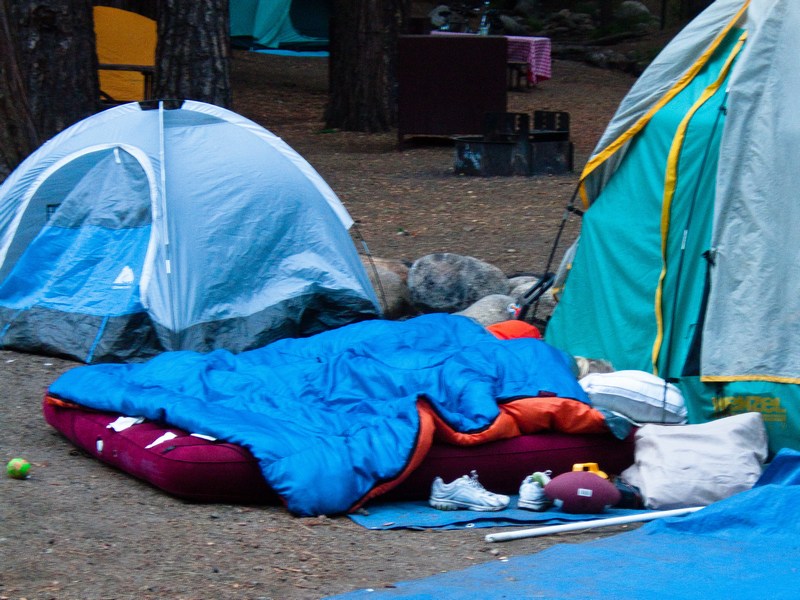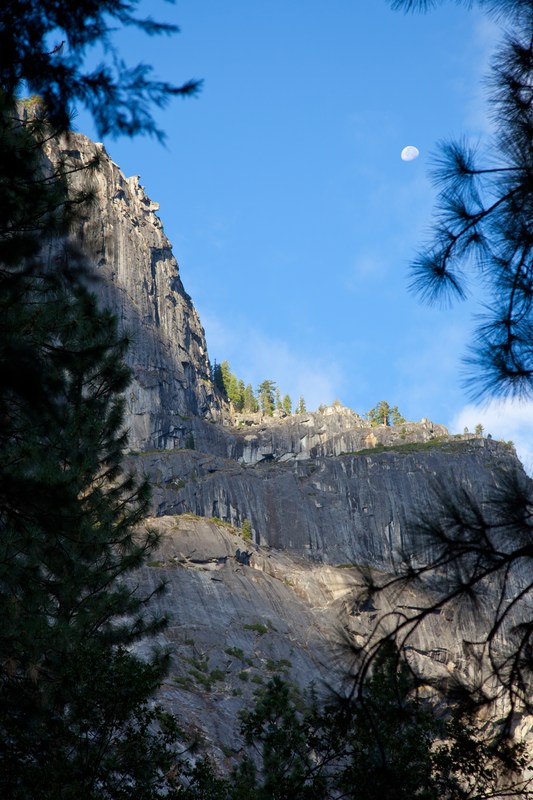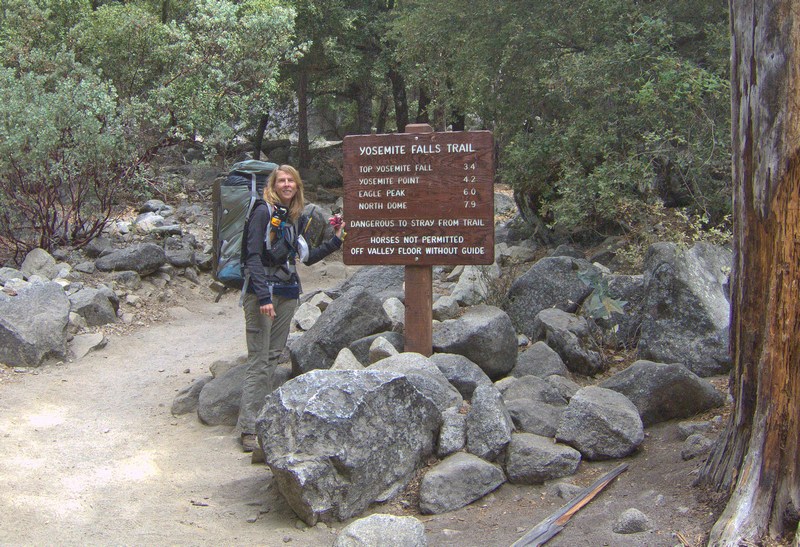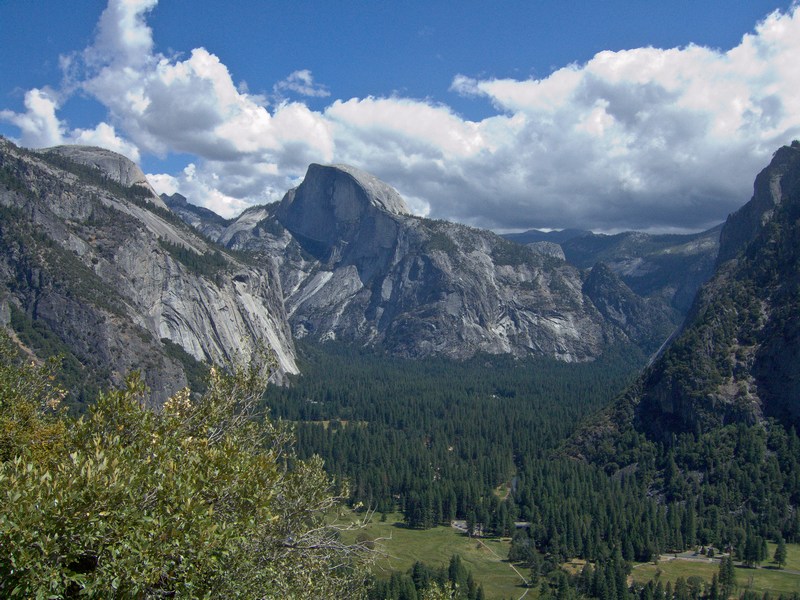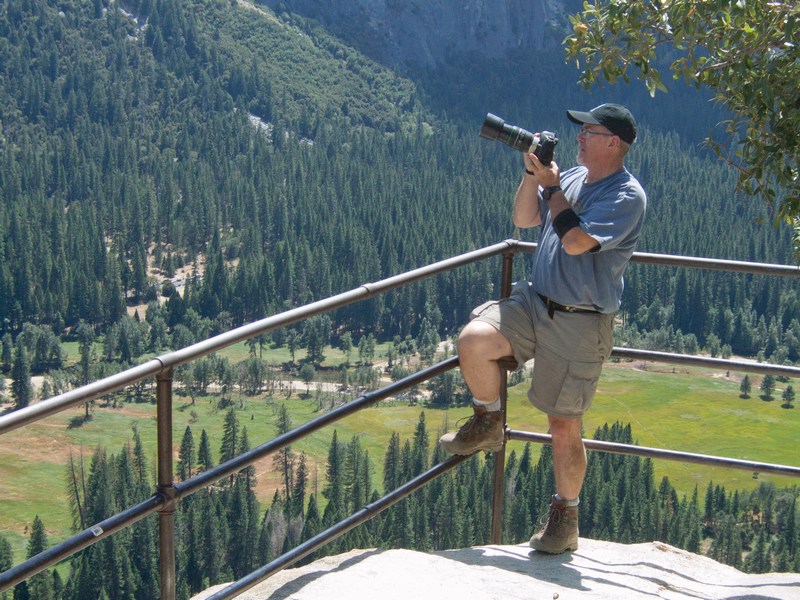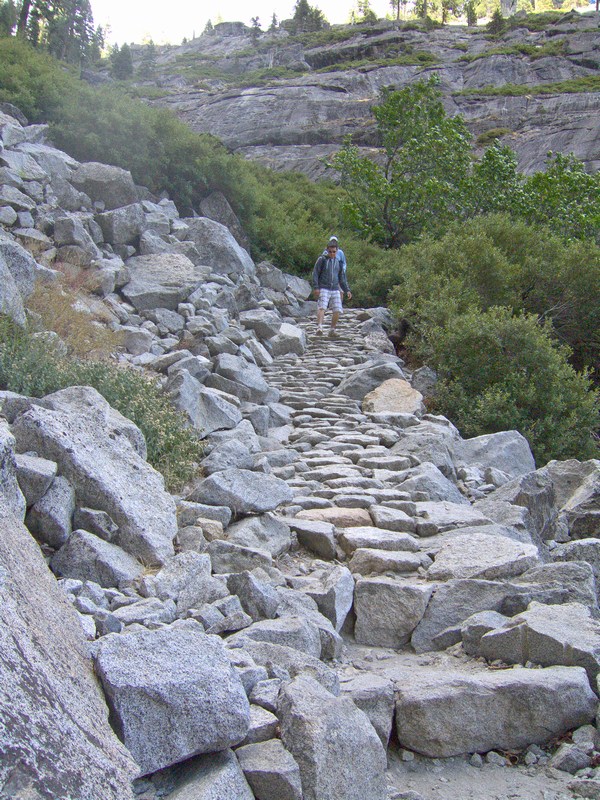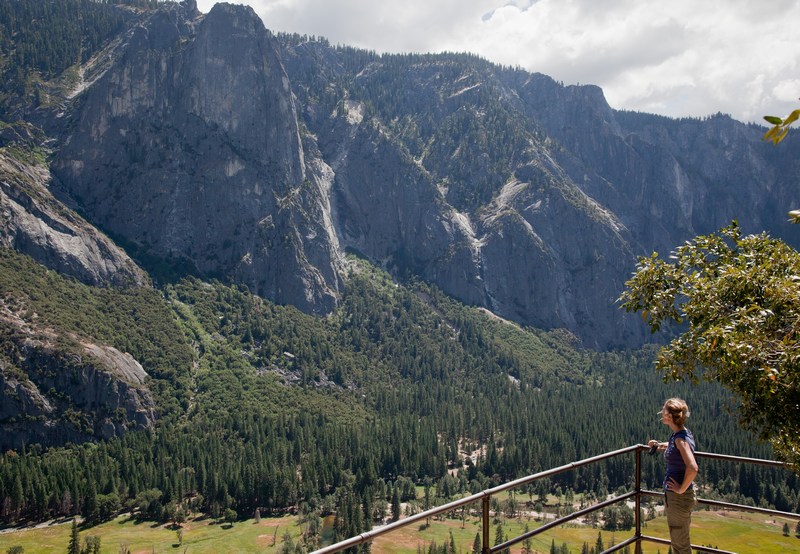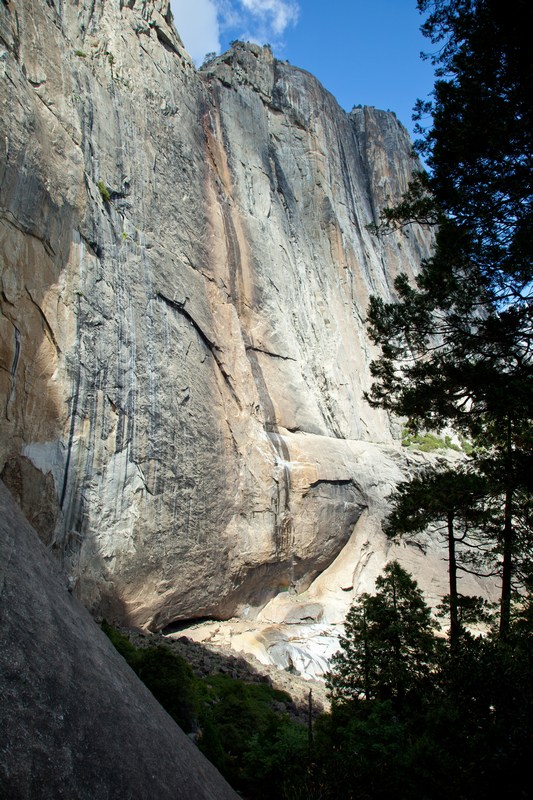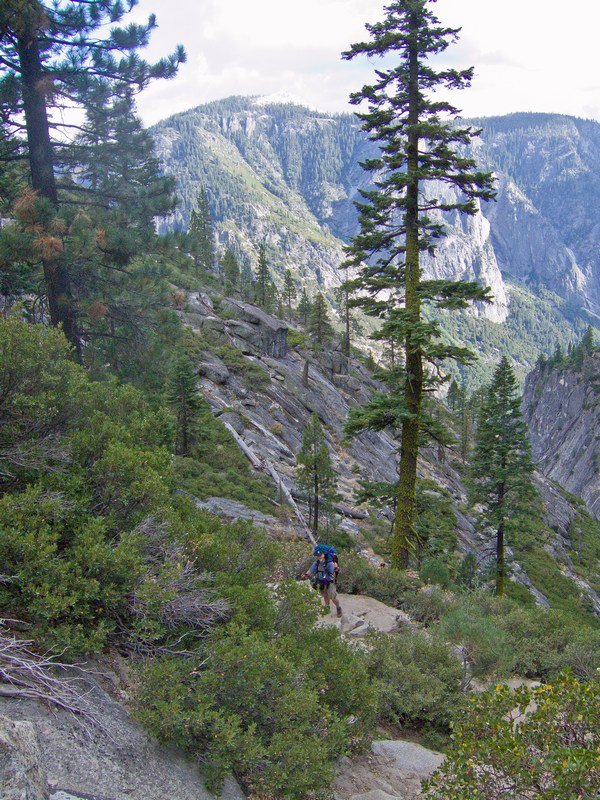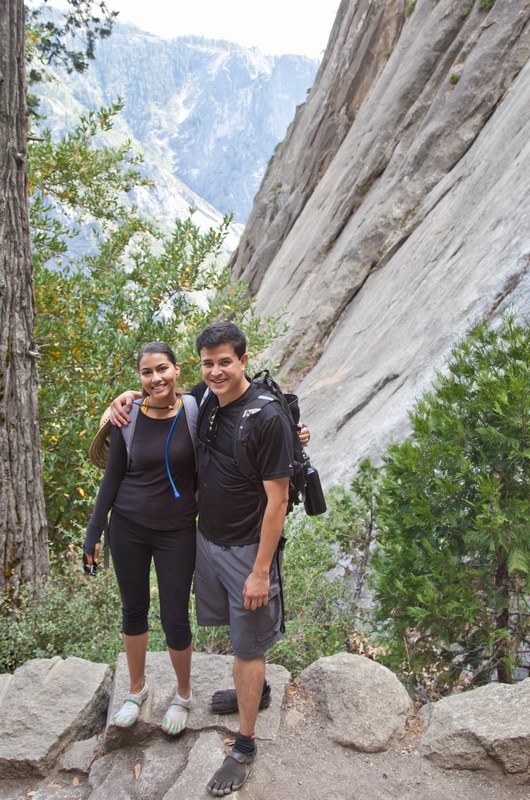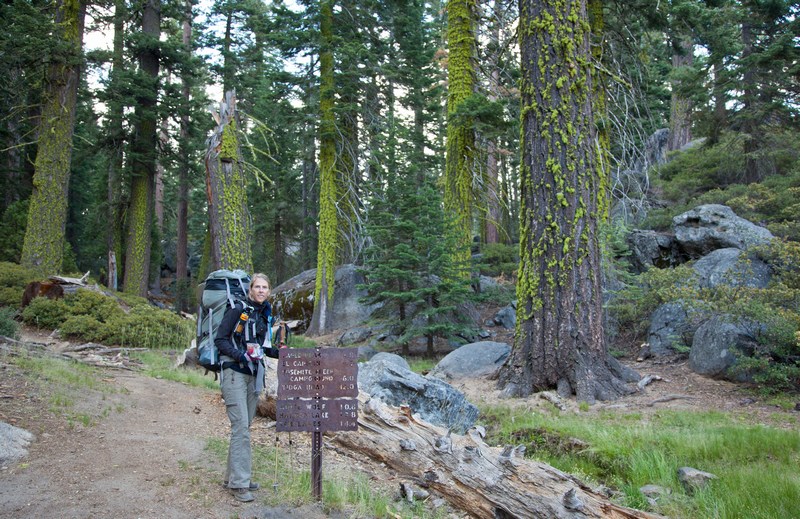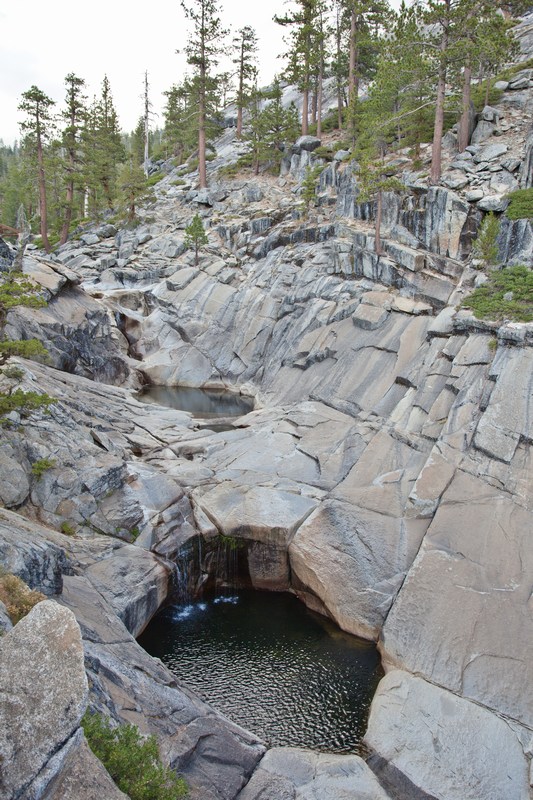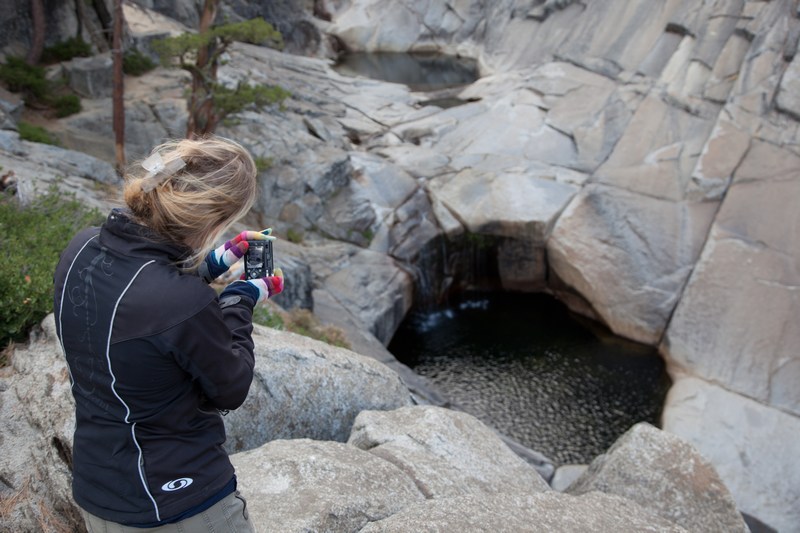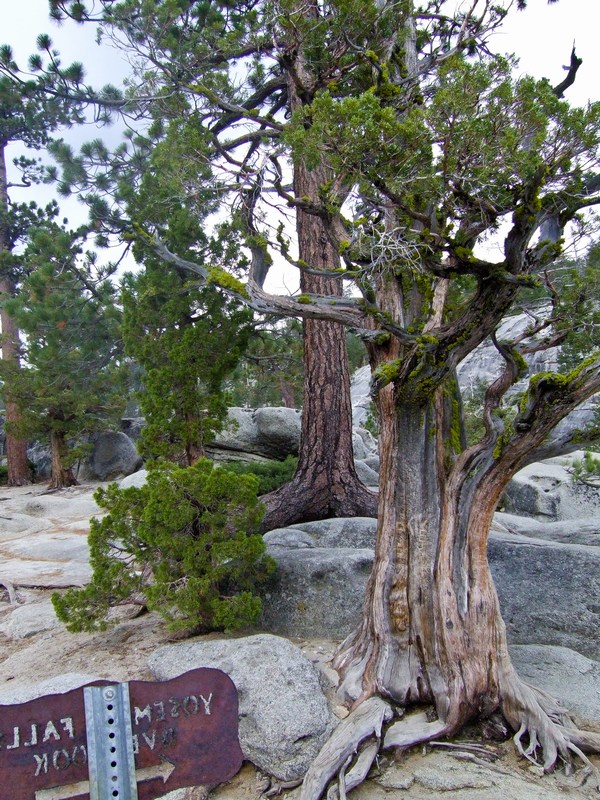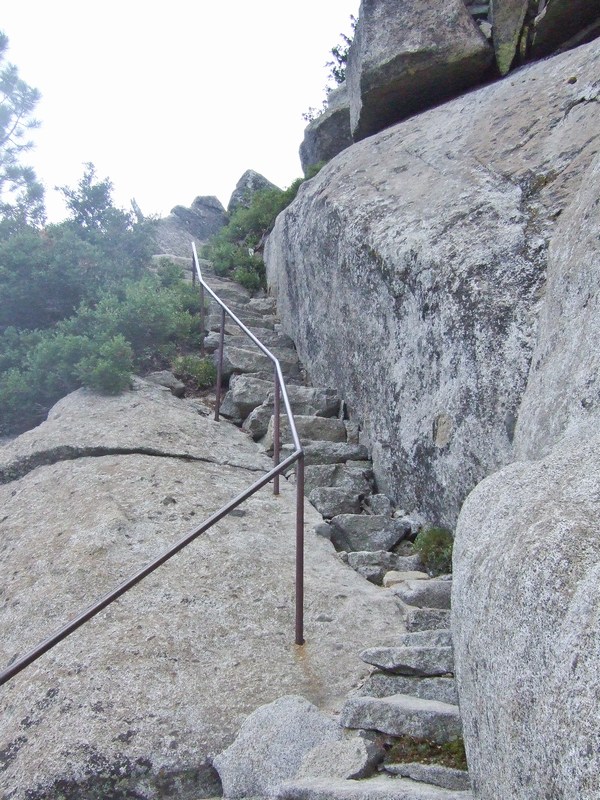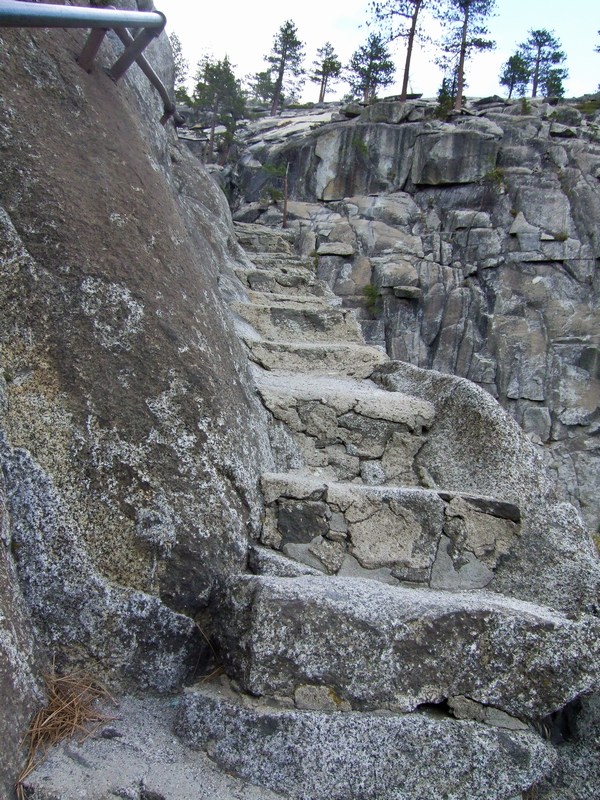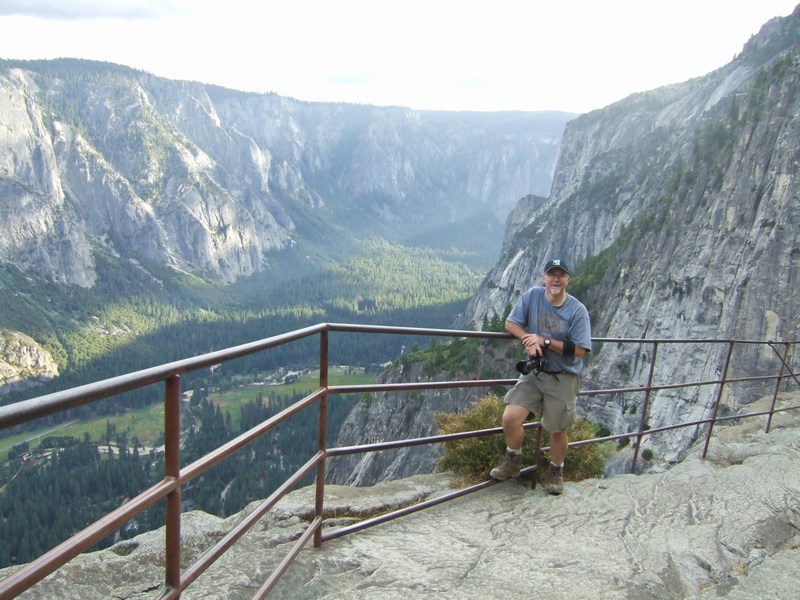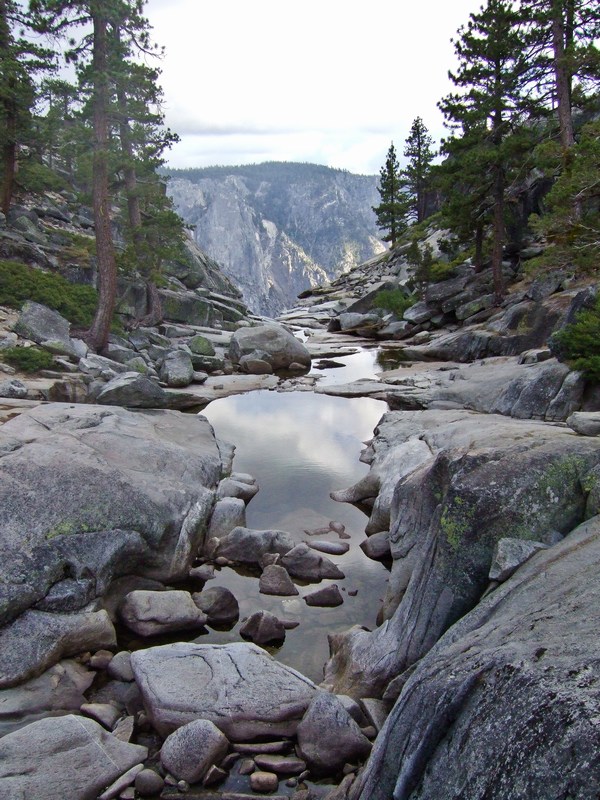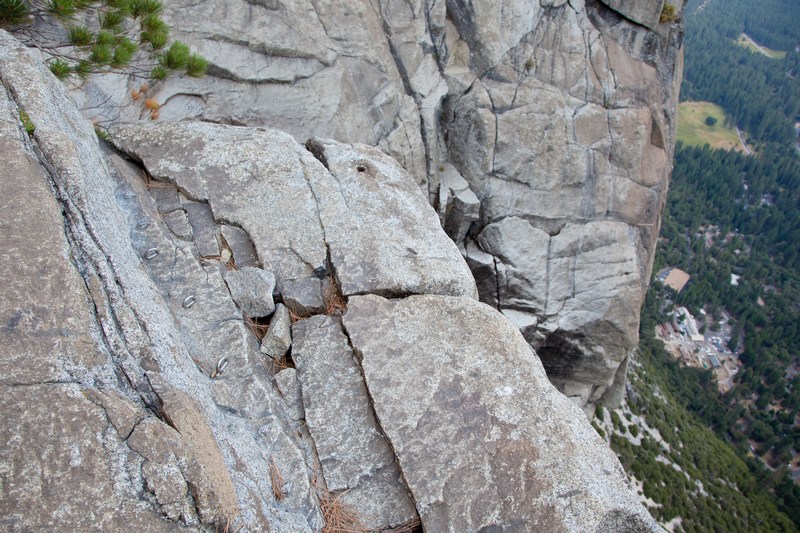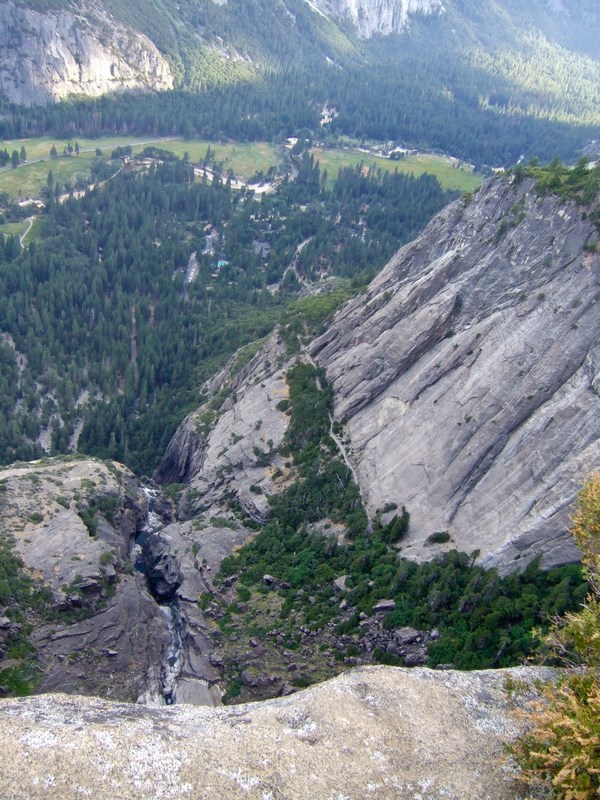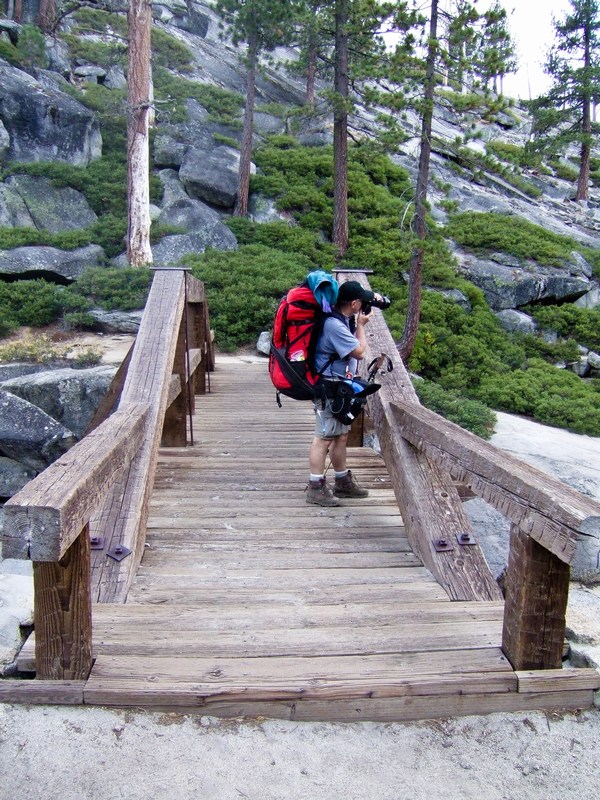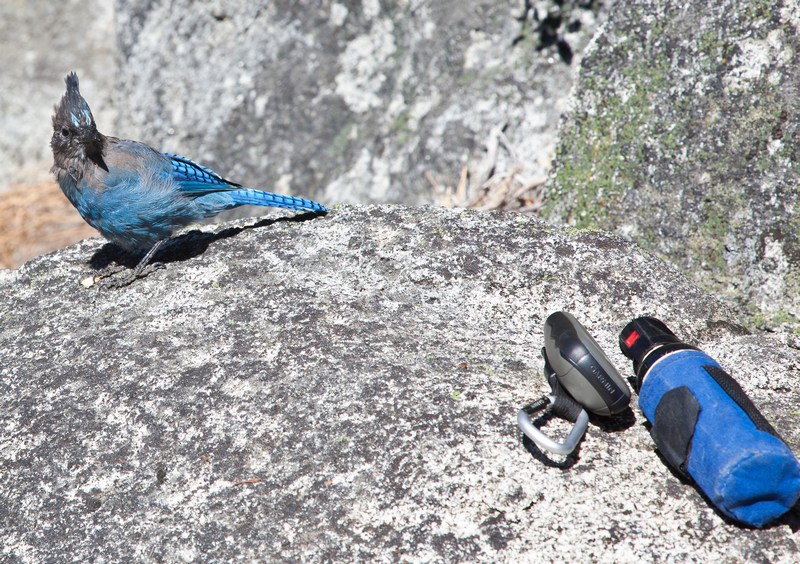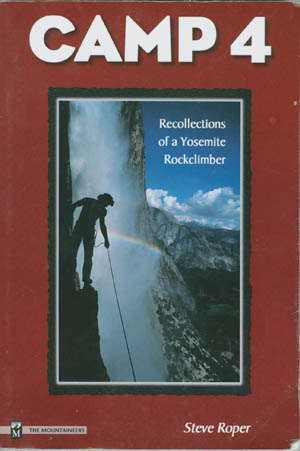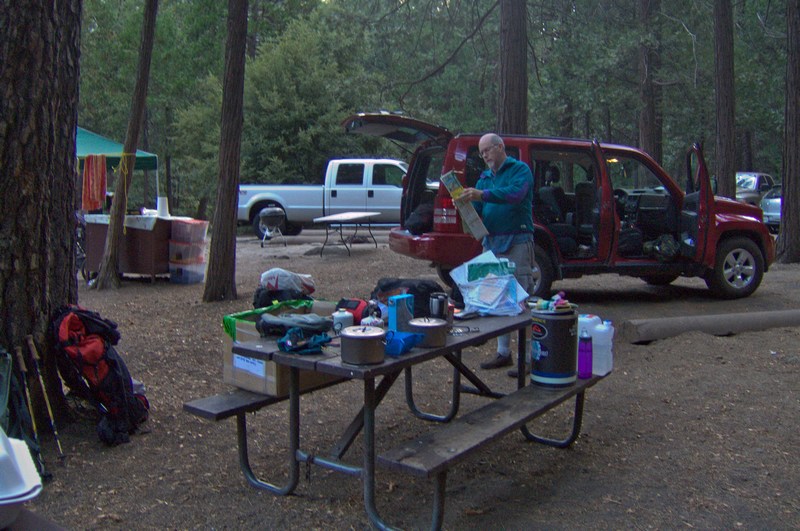It's the crack of dawn and time to get moving before the heat of the day sets in. At least that's the plan.
In the next campsite, the parents are sleeping outside their tent and are pretty much out for the count so far.
You can see a tennis ball and a football in the left photo, and a little dump truck in the right one. I'll bet they had a busy day yesterday with the tired little occupant of the small tent, and that's why sleep is still top priority.
The sun is just starting to make its way into the valley, competing with the moon. The picnic table is covered with stuff to pack.
Via the 7AM hybrid shuttle bus, we make it to the trailhead for Upper Yosemite Falls. It's tucked in behind Camp 4 Walk-In Campground. For a few years this was know as the Sunnyside Walk-In Campground, but recently reverted to its original name for historical reasons. Camp 4 was the name back in the 50's, 60's and 70's when big wall climbing came of age in America - right here at Half Dome, El Capitan and the Royal Arches.
If you want to read an excellent book about the history of Camp 4 and the golden age of climbing, get "Camp 4" by Steve Roper which includes stories about the first ascent of Half Dome. The book is full of details about Royal Robbins famous swinging traverse, the Gong Flake, and Harding going up el Cap. As well, there are engaging stories about Allen Steck, Chouinard developing his innovative climbing aids and rurps, Salathe from Switzerland, and others of the age.
As you might expect, Amazon's got it.
There was a time not so long ago when the National Park Service wanted to get the ruffian climbers out of the park. The camp was an eyesore, new space was needed for park service employees, and people clogged the road under El Capitan when they stopped to watch the climbers with binoculars. There was a big effort to stop this attempted eviction, and it met with little success, until something happened. Letters were penned to the NPS by world-renowned climbers from over 30 countries, explaining that there were three places on earth considered sacred to climbers - Chamonix, Everest Base Camp, and Camp 4. Wisdom prevailed within the NPS, and in 2003 Camp 4 was listed in the National Register of Historic Places.
For a brief history of Camp 4, click to Wikipedia!
The first part of the trail is well treed over the switchbacks, and the first real lookout is Columbia Rock.
This is what you see through the camera viewer...
The sun's just beaming, and we both lie down in the sand to soak up the rays. Around the corner is a glimpse of the height we'll gain on the rock step switchbacks.
But wait...the Falls are dry! No wind from the water. No soaking wet horizontal spray. Just cool air blowing. Oh well.
Next stop...the top, but first...the switchbacks.
Along the way we meet a couple on their way down. Tony and Emanuela are trail runners, and are wearing the latest in foot-hugging footwear. Every toe has its own place!
Soon we're at the trail junction at the top of the climb, just a few hundred yards from Yosemite Creek and the waterfall overlook.
At the top, near the edge, there is a lot of rock and only a few trees.
The creek has a bit of water in it and now you can see the big potholes that are well hidden when the creek is flowing at full tilt in the Spring.
The photographer composes her shot.
There is a vertigo-inducing set of steps tracking down the rock face to reach the "Overlook". One part has a railing, and the other has a steel handrail secured to the face, with the other side open to below.
Can you see the rope bolts for climbers?
Looking over the edge near the waterfall, you can see the trail where is comes round from Columbia Rock. Get ready for the final dozens of switchbacks that bring you to the sign we saw a few pictures ago.
Crossing the bridge just upstream of the falls, we start looking for a place to camp for the night, and meet up with people we'd chatted with earlier. They had also looked for - and found - one of the closest camping spots well away from the creek and half a mile in from the rim. We set up nearby, cooked a quick dinner and turned in for a well-earned rest.
The next morning was clear and sunny.
We packed up after breakfast while a Stellar Jay paid us a visit - no doubt looking for crumbs.
It seemed confused about the blue and black thing also sitting on the rock!
"It's bigger, bluer and blacker than me. I'm Outta Here!"
After a quick bite to eat, Jackie packed up camp while I bushwhacked down to the creek to pump water from the small flow. At the end of summer it's dangerous to rely on the smaller water sources along the trail from Yosemite Point to North Dome. Indian Canyon Creek and Lehamite Creek might be very dry, in which case you either head back, or take your chances finding pumpable water further along the next day. We chose to pump and just shoulder the extra weight.
Off we went, up the trail to Yosemite Point, with the plan of making for North Dome to spend the night.
